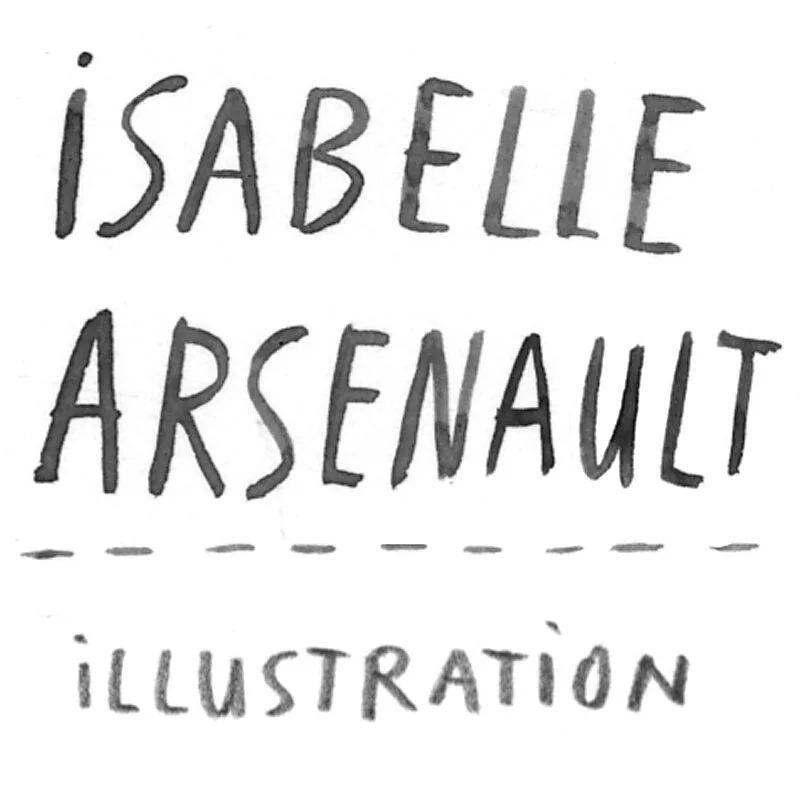What did you study to become an illustrator?
I first studied Visual Arts at cégep du Vieux-Montréal and then went on to specialize in Graphic Design at the Université du Québec à Montréal (UQAM, 2001). I still use and apply the concepts that I learned during that time in my work today. The illustration classes from the Graphic Design program allowed me to discover that illustration could be a profession and made me want to specialize in the field.
You started out with editorial and advertising illustration for a few years before finally settling on becoming an illustrator of children’s books. What motivated your decision?
I started being more interested in children’s book illustration when I had my own children. From that moment I started to buy, read and become passionate about children’s books. I enjoyed the creative freedom this type of illustration allowed me and as a young mother, the long-term projects suited me better than the short deadlines experienced in the editorial field. Moreover, illustrating children’s books gave me the impression that I was working on something more concrete and long-lasting. I bought all sorts of books for my children, but also for myself, when I liked the illustrations or found the design particularly interesting. I have acquired an impressive collection to this day.
How would you describe your artistic style?
I like to try different visual approaches adapted to each story. I work with traditional mediums like gouache, ink, colour crayons and pencils. I like to mix techniques and mediums that I choose according to the project, the subject of the book, the desired ‘feel’ for the book, and the inspiration of the moment. Then I make touch-ups in Photoshop. I like to develop my work from book to book. I don’t want to repeat myself. Each project is an opportunity for me to imagine a world, a visual language that carries the story along. Sometimes, it’s a long search before finding what I’m looking for. At other moments, it seems that everything falls into place and it’s much easier.
What does your studio/work space look like?
For a long time I have shared a studio and in the last few years, I felt like coming home to set up my workspace. But after spending so much time at home during the pandemic, I felt I needed to move out again! My studio is now located in a former mattress factory, on the banks of canal Lachine, in Montréal. It’s a roomy loft style space, with large windows overlooking the canal. I enjoy having more space and I intend to use it to create larger format works, in addition to my illustrations for children’s books.
What is the source of your inspiration?
When I see something I like visually, I make a note of it or take a photo. In my workshop, I surround myself with objects that I find beautiful or that are important to me. I like old things, old books, old photos, things that are marked by the passage of time. But I also like really modern objects, fluorescent colours, the juxtaposition of old and modern. Inspiration can appear at any moment, really. I can equally be inspired by a stroll in the city or a walk in the forest. It’s about keeping one’s eyes open and being receptive.
How long does it usually take to complete a book? Do you work on several projects at the same time?
It really depends on the illustrator, the project, the publisher, etc. There are many steps involved in the production of a book – sketches, corrections, final renderings, touch-ups, lettering, the cover, page layout. For me, a book of 30 to 40 pages can take 3 to 6 months to complete. Longer books, like graphic novels sometimes require a year or even more. I’d rather work on one project at a time but it’s rarely possible. There are always little things likely to get in your way…
What advice would you give to an illustrator who is just starting their career?
The tricky thing about being an illustrator is that the projects we’re working on are often commissioned. Therefore we have to obey the constraints and needs of those projects, while bringing our unique artistic vision to the table. These constraints can sometimes be perceived as roadblocks to creativity by some and this can cause much frustration. That’s why a creative outlet outside of professional contracts is important. For example, keeping a sketchbook, drawing simply for pleasure, doing something else creative: pottery, painting etc. where we can really enjoy ourselves, through exploring new techniques or ideas that can eventually enrich our work at the right time.



